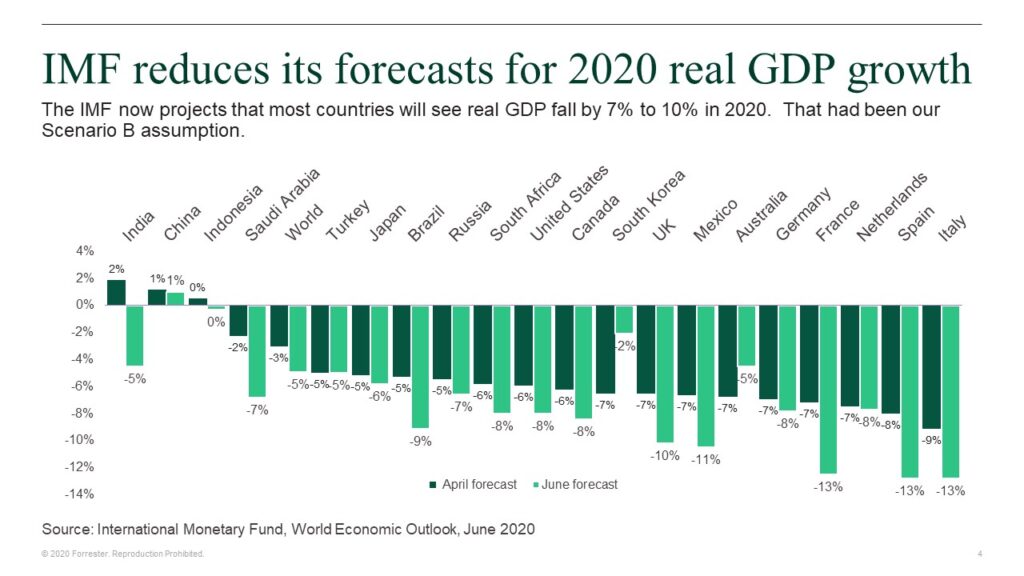Imf World Economic Indicators Database
economic wallpaper worldBreakdowns by level of government type of instrument currency and maturity are provided using standard definitions to support cross-country comparisons. Learn how the World Bank Group is helping countries with COVID-19 coronavirus.
Your browser is not up-to-date.

Imf world economic indicators database. See also the World Economic Outlook Reports. Growth and inflation projections are included for all countries through 2003. For optimum experience we recommend to update your browser to the latest version.
Washington DC February 12 2021. The World Economic Outlook WEO database contains selected macroeconomic data series from the statistical appendix of the World Economic Outlook report which presents the IMF staffs analysis and projections of economic developments at the global level in major country groups and in many individual countries. The IMFs World Economic Outlook uses a bottom-up approach in producing its forecasts.
The WEO is released in April and SeptemberOctober each year. Global growth is now projected to slow from 36 percent in 2018 to 33 percent in 2019 before returning to 36 percent in 2020. The Rise of Corporate Market Power and Its Macroeconomic.
As noted in the October 2020 World Economic Outlook WEO a green investment push coupled with initially moderate but steadily rising carbon prices would yield needed emissions reductions while supporting the recovery from the pandemic recession. The SDDS was established in 1996 to guide countries seeking access to international capital markets in the dissemination of economic and financial data to the public. Discussions focused on the impact of COVID-19 and related oil price shock and policy priorities during the recovery phase and beyond.
Daniel Kanda conducted a virtual mission to Oman from January 17 to 31 to review economic developments the outlook and policies. The World Economic Outlook WEO database contains selected macroeconomic data series from the statistical appendix of the World Economic Outlook report which presents the IMF staffs analysis and projections of economic developments at the global level in major country groups and in many individual countries. Indicators from The World Bank.
These are then aggregated and through a series of iterations where the aggregates feed back into individual countries forecasts forecasts converge to the projections. Strong multilateral cooperation is required to bring the pandemic under control everywhere. GDP Gross Domestic Product Real Nominal Deflator Index Growth Change.
Use of IMF credit DOD current US Financial Sector. After strong growth in 2017 and early 2018 global economic activity slowed notably in the second half of last year reflecting a confluence of factors affecting major economies. It presents the most current and accurate global development data available and includes national regional and global estimates.
World Development Indicators The primary World Bank collection of development indicators compiled from officially-recognized international sources. The WEO is released in April and SeptemberOctober each year. It presents the most current and accurate global development data available and includes national regional and global estimates.
A joint World Bank-IMF database that presents public sector debt statistics general government plus public corporations with quarterly frequency. It presents the most current and accurate global See more External Debt and Financial Flows statistics Heath statistics Gender Economy Social Data Last Updated. The GEE Live database is updated continuously throughout the WEO exercise.
The World Economic Outlook WEO database is created during the biannual WEO exercise which begins in January and June of each year and results in the April and SeptemberOctober WEO publication. Global Economic Environment GEE - IMF The Global Economic Environment contains information on the assumptions to be used in preparing the baseline projections for the WEO. The World Economic Outlook WEO database contains selected macroeconomic data series from the statistical appendix of the World Economic Outlook report which presents the IMF staffs analysis and projections of economic developments at the global level in major country groups and in many individual countries.
International Debt Statistics - World Bank. Even though Global Development Finance GDF is no longer listed in the WDI database name all. CPIA economic management cluster average 1low to 6high.
The WEO database is created during the biannual World Economic Outlook WEO exercise which begins in January and June of each year and results in the WEO publication which is released in May and October. The World Economic Outlook WEO database contains selected macroeconomic data series from the statistical appendix of the World Economic Outlook report which presents the IMF staffs analysis and projections of economic developments at the global level in major country groups and in many individual countries. World Development Indicators WDI is the primary World Bank collection of development indicators compiled from officially recognized international sources.
The e-GDDS was established in 2015 to guide countries in data dissemination by supporting transparency encouraging statistical development and helping create strong synergies between data dissemination and surveillance. That is country teams within the IMF generate projections for individual countries. An International Monetary Fund IMF mission led by Mr.
World Development Indicators WDI is the primary World Bank collection of development indicators compiled from officially recognized international sources. Selected series from the publication are available in a database format.


